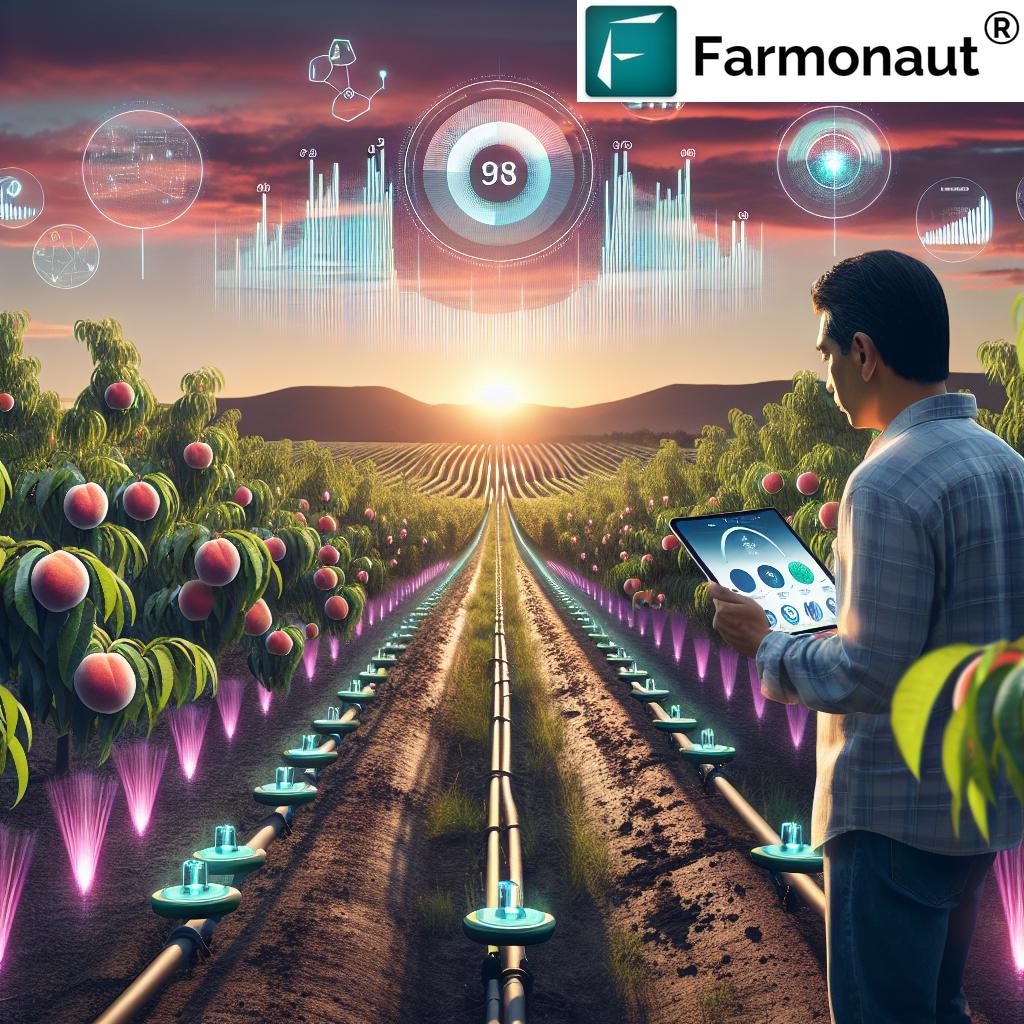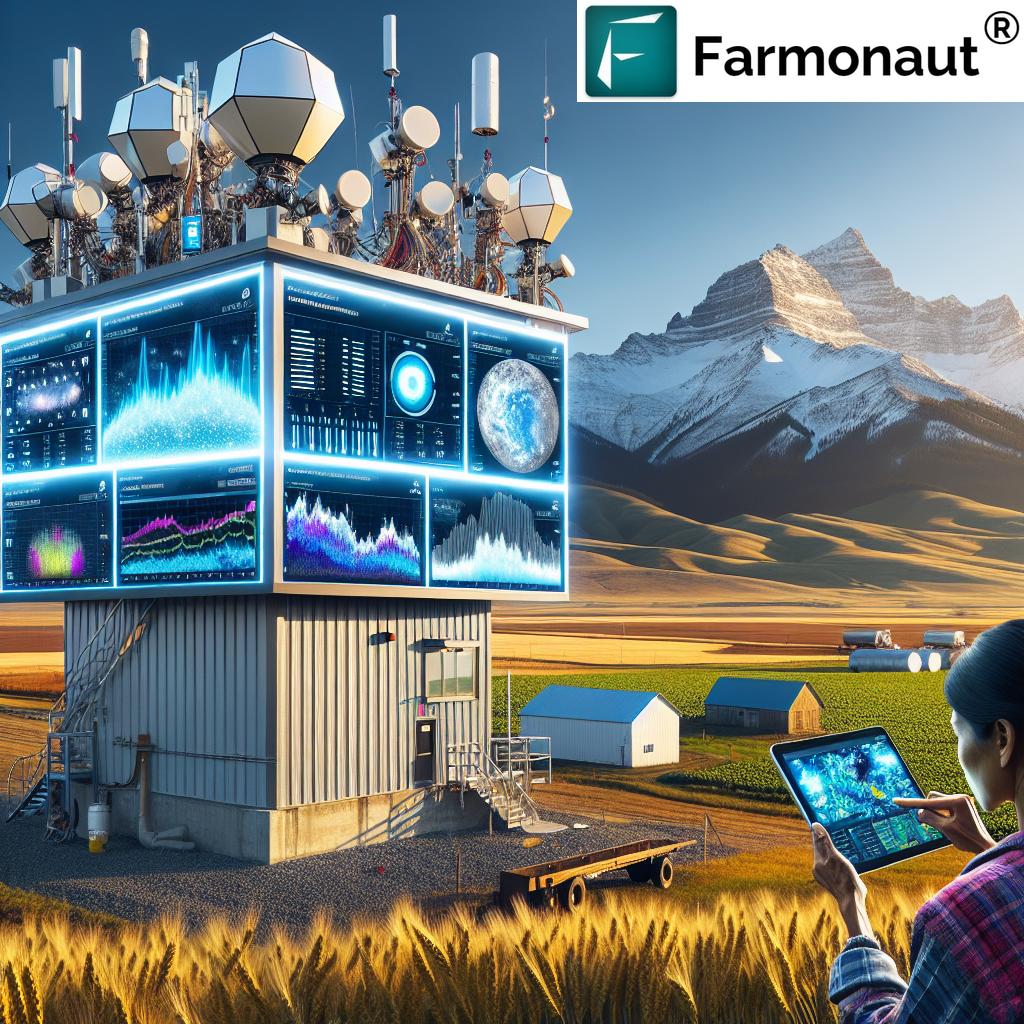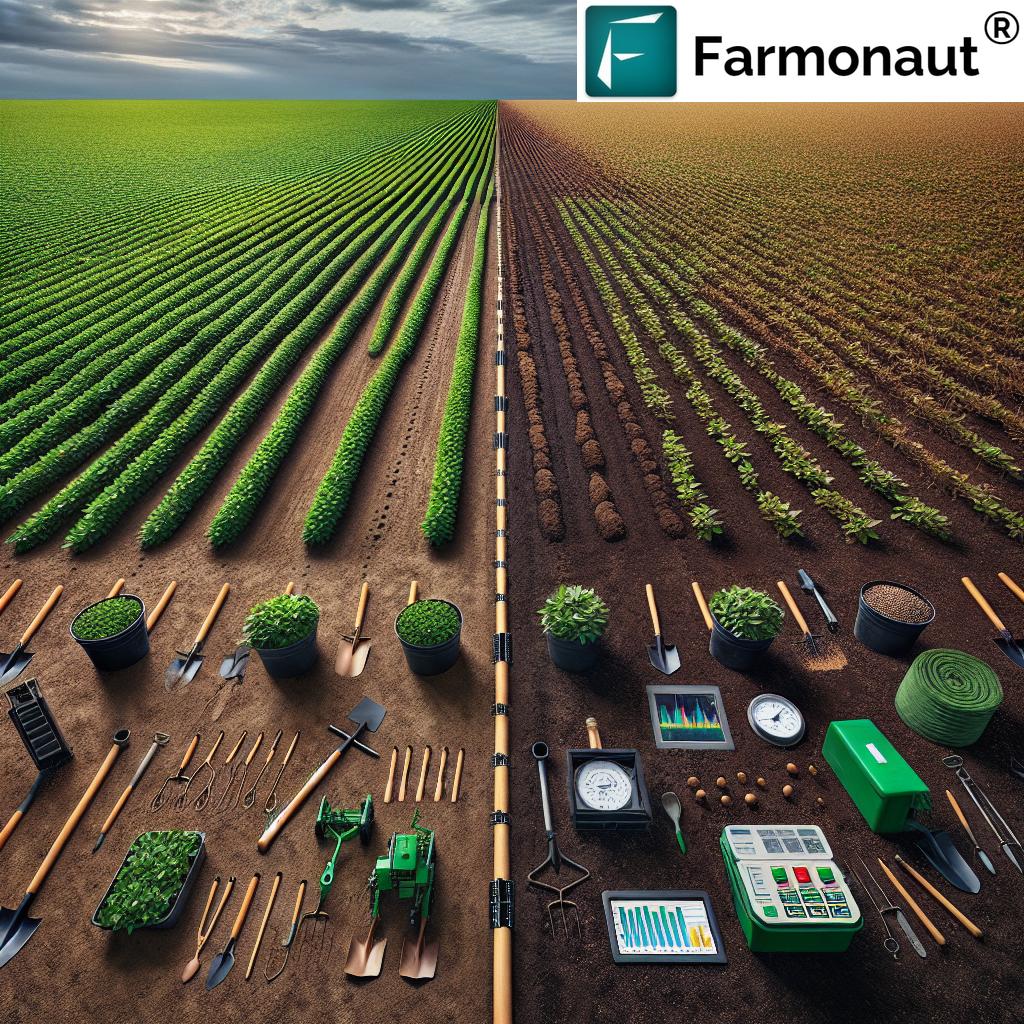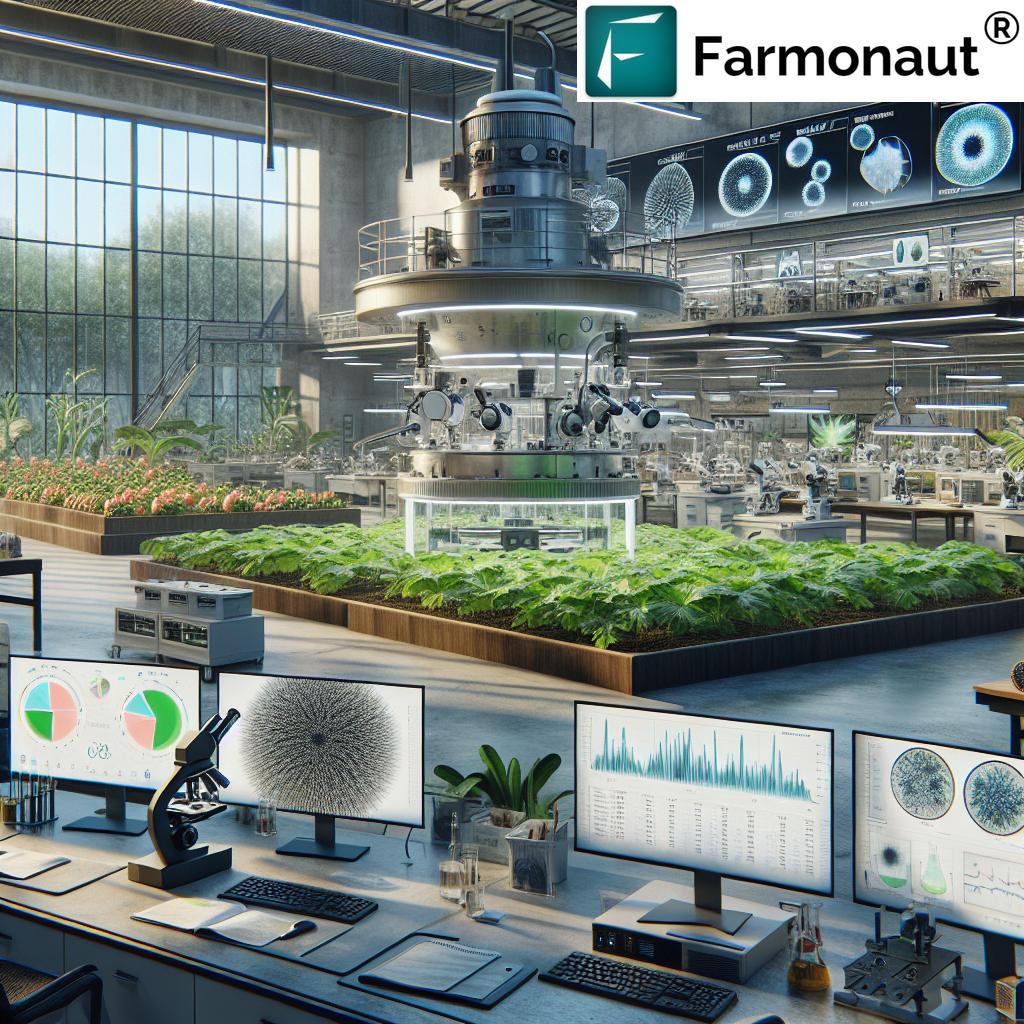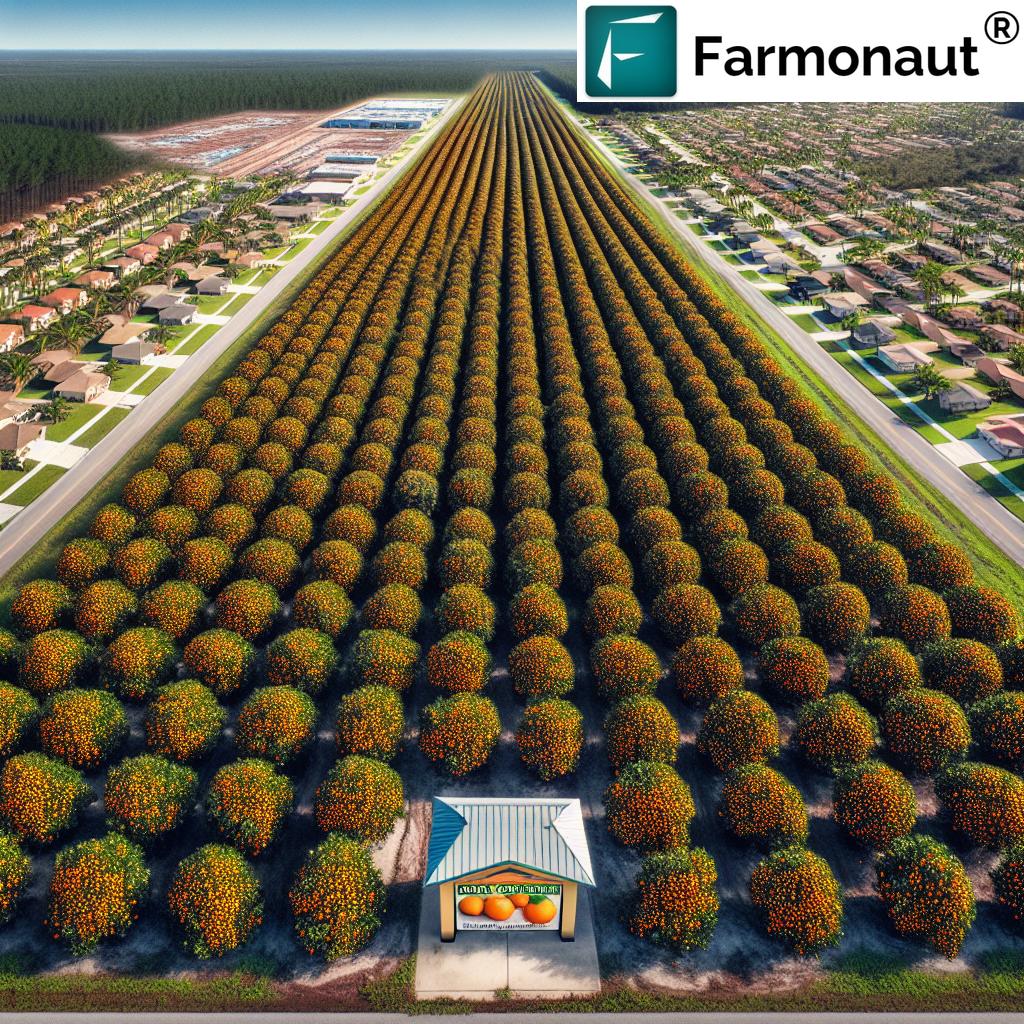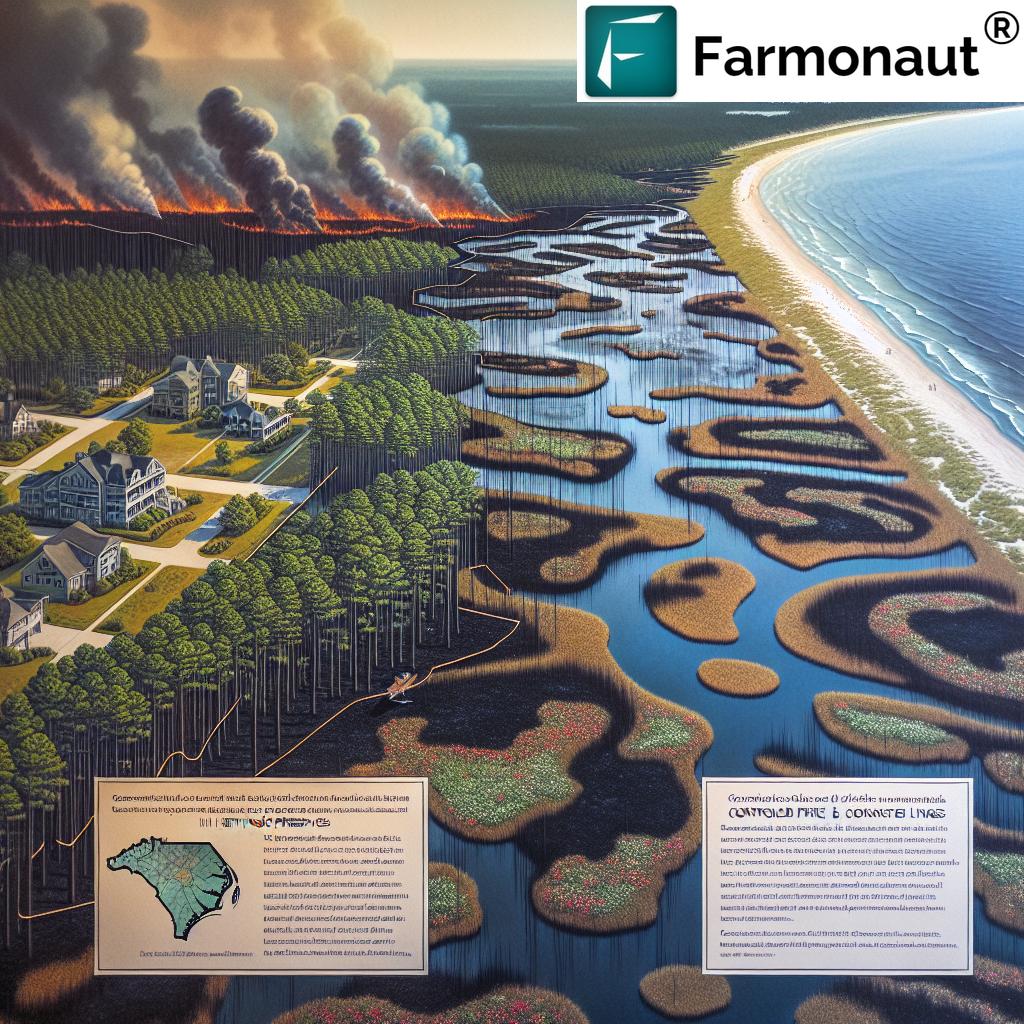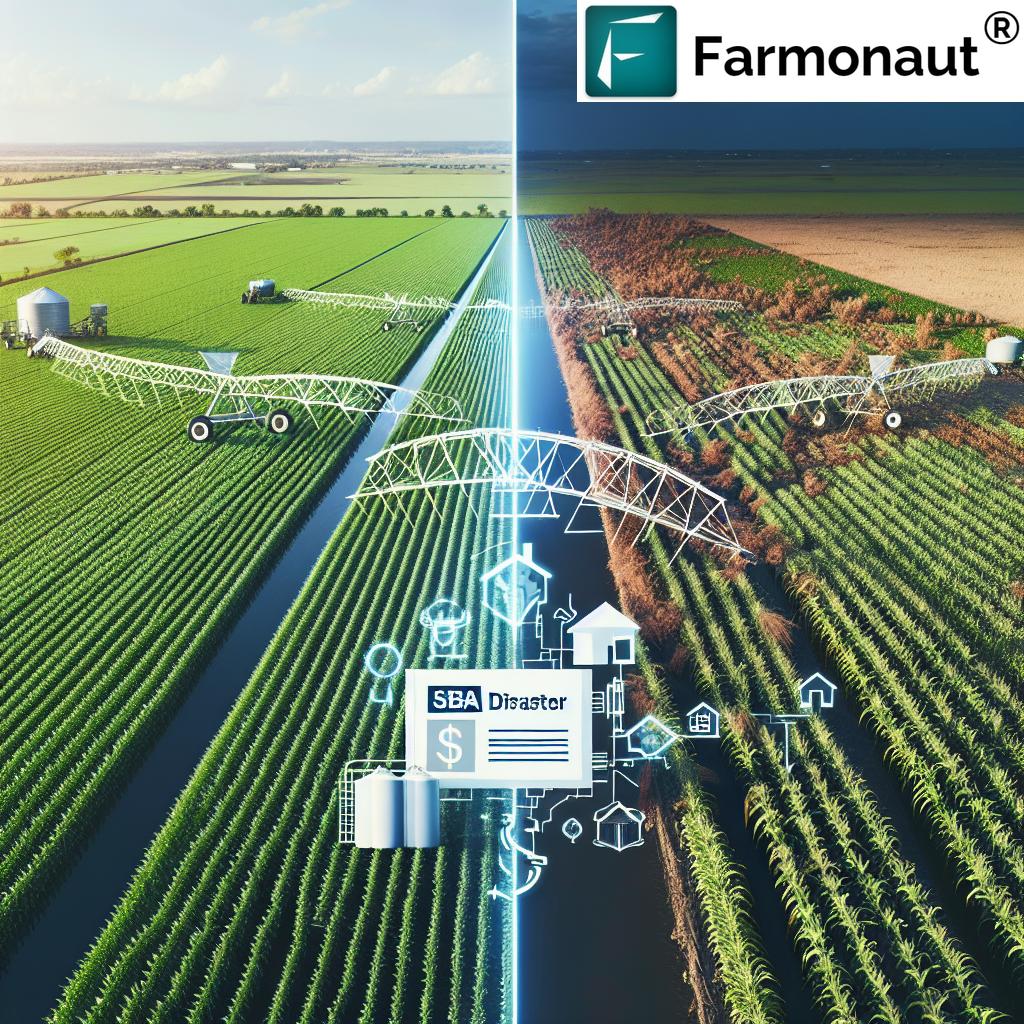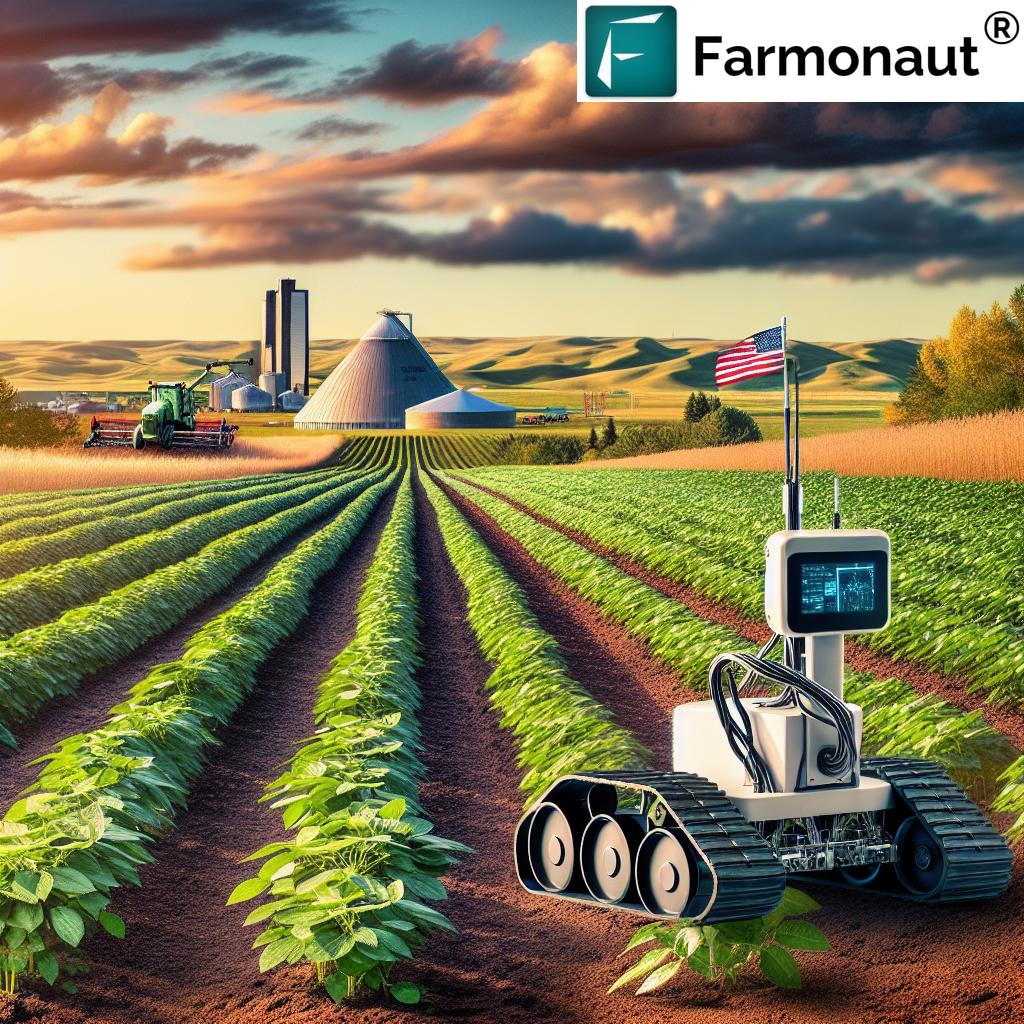Sustainable Packaging Innovation: Atlanta’s Global Impact on Consumer Products Industry Trends
“Atlanta’s packaging conference showcases innovations from over 50 global industry leaders in sustainable consumer products.”
Welcome to our comprehensive exploration of the latest developments in sustainable packaging innovation, as showcased at the recent global conferences held in Atlanta, Georgia. We at Farmonaut, while primarily focused on agricultural technology, recognize the importance of sustainability across all industries, including consumer packaging. In this blog post, we’ll delve into the groundbreaking advancements presented by industry leaders and their potential impact on the global market.
The Rise of Sustainable Consumer Packaging
In recent years, the consumer products industry has witnessed a significant shift towards sustainable packaging solutions. This trend is driven by increasing environmental awareness among consumers and stricter regulations aimed at reducing plastic waste. Atlanta, known for its thriving business ecosystem, has become a hub for innovation in this sector.
The recent conferences held in the city brought together key players in the packaging industry, showcasing cutting-edge technologies and materials that promise to revolutionize how we package and consume products. From biodegradable food containers to recycled plastic beverage bottles, the innovations presented are set to reshape the future of packaging.
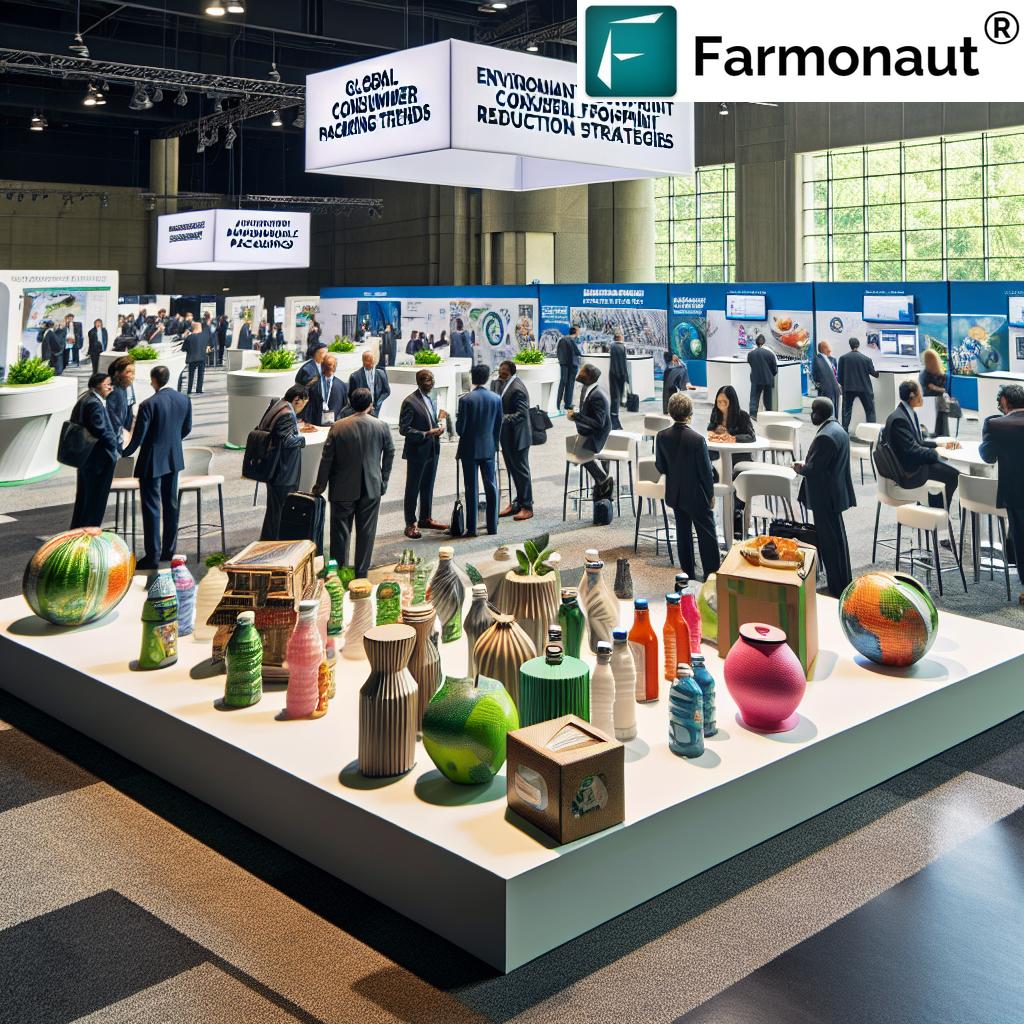
Renewable Packaging Materials: A Game-Changer
One of the most exciting developments highlighted at the Atlanta conferences was the advancements in renewable packaging materials. These innovations are crucial in reducing the environmental footprint of consumer products. Let’s explore some of the groundbreaking materials presented:
- Plant-based Plastics: Derived from renewable sources such as corn starch or sugarcane, these materials offer a biodegradable alternative to traditional petroleum-based plastics.
- Mycelium Packaging: This innovative material uses fungal roots to create sturdy, compostable packaging suitable for various products.
- Seaweed-based Films: Offering excellent barrier properties, these marine-derived materials are both biodegradable and edible in some cases.
These renewable materials not only reduce reliance on fossil fuels but also offer end-of-life solutions that are far less harmful to the environment compared to traditional packaging.
Recycled Packaging Innovation: Closing the Loop
Recycling plays a crucial role in sustainable packaging, and the conferences in Atlanta showcased numerous innovations in this area. The focus is on creating a circular economy where packaging materials can be continuously recycled without loss of quality.
- Chemical Recycling: This process breaks down plastics into their chemical components, allowing for the creation of new, high-quality materials.
- Advanced Sorting Technologies: AI-powered sorting systems are improving the efficiency and purity of recycled materials.
- Upcycled Packaging: Companies are finding creative ways to repurpose waste materials into valuable packaging solutions.
These innovations are crucial in addressing the global plastic waste crisis and moving towards a more sustainable future in packaging.
Environmental Footprint Reduction Strategies
A key focus of the Atlanta conferences was on strategies to reduce the environmental impact of packaging throughout its lifecycle. This holistic approach considers everything from raw material sourcing to disposal or recycling.
“Sustainable packaging initiatives have reduced environmental footprint by 30% in the consumer goods sector since 2015.”
- Lightweight Design: Reducing the amount of material used in packaging without compromising functionality.
- Energy-Efficient Manufacturing: Implementing processes that consume less energy and produce fewer emissions.
- Optimized Transportation: Designing packaging that maximizes shipping efficiency, reducing fuel consumption and emissions.
These strategies not only benefit the environment but also often result in cost savings for companies, making sustainability a win-win proposition.
Food and Beverage Packaging Solutions
The food and beverage industry faces unique challenges when it comes to sustainable packaging. Products in this sector often require specialized packaging to ensure freshness, safety, and extended shelf life. The conferences in Atlanta showcased several innovative solutions specifically tailored for this industry:
- Edible Packaging: Made from natural ingredients, these packaging solutions can be consumed along with the product, eliminating waste.
- Active Packaging: Incorporating materials that interact with the product to extend shelf life and reduce food waste.
- Mono-material Packaging: Designed to be easily recyclable by using a single type of material throughout.
These innovations are crucial in addressing the significant amount of waste generated by the food and beverage industry while meeting consumer demands for convenience and quality.
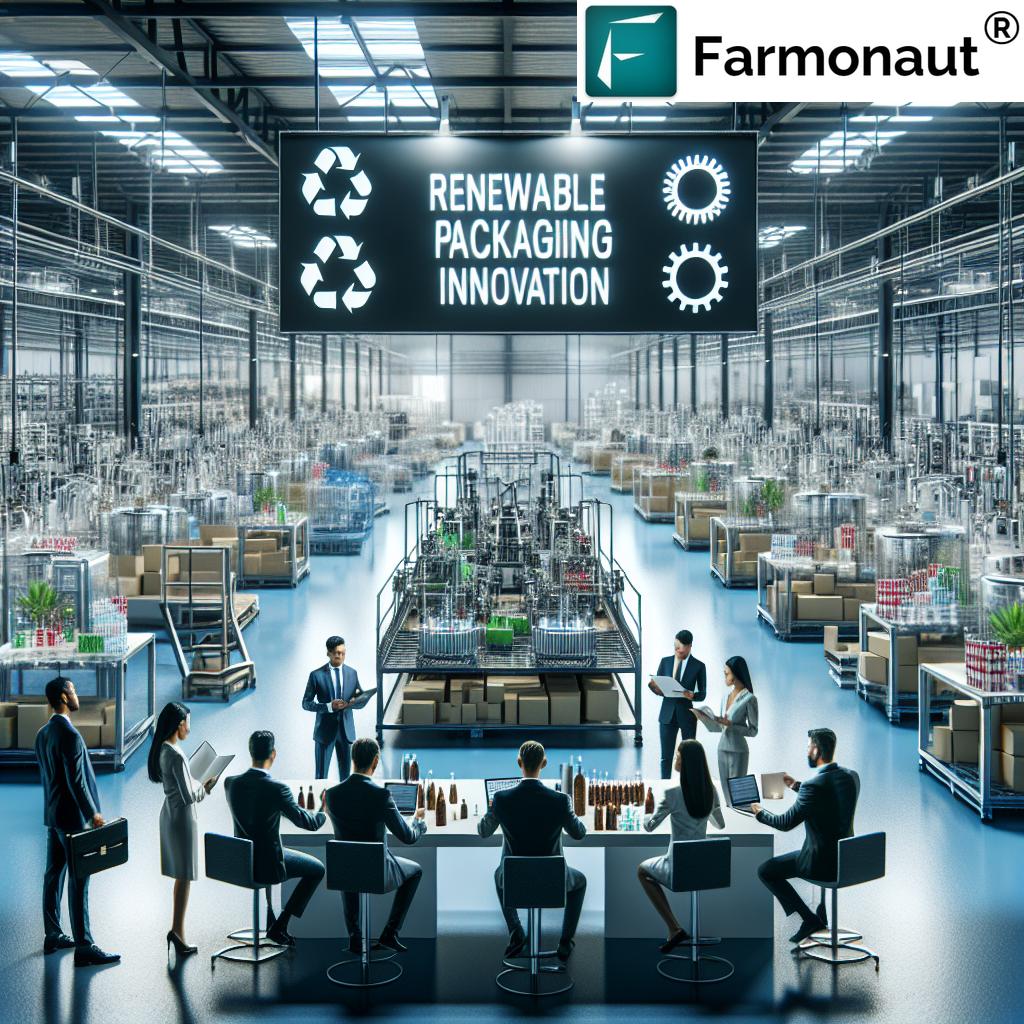
Household Products Packaging Design
The household products sector is another area where sustainable packaging innovation is making significant strides. Presenters at the Atlanta conferences showcased designs that not only reduce environmental impact but also enhance user experience:
- Refillable Containers: Durable packaging designed for multiple uses, reducing the need for single-use plastics.
- Concentrated Products: Reducing packaging size and weight by offering concentrated formulas that consumers can dilute at home.
- Waterless Products: Innovative formulations that eliminate the need for water in the product, reducing weight and packaging requirements.
These designs are not only environmentally friendly but also offer convenience and cost savings to consumers, making them increasingly popular in the market.
Investor Relations in the Packaging Industry
The conferences in Atlanta also provided valuable insights into investor relations within the packaging industry. With sustainability becoming a key factor in investment decisions, companies are increasingly focusing on their environmental credentials to attract investors.
- ESG Reporting: Companies are enhancing their Environmental, Social, and Governance (ESG) reporting to demonstrate their commitment to sustainability.
- Innovation Portfolios: Showcasing pipelines of sustainable packaging innovations to highlight future growth potential.
- Partnerships and Collaborations: Demonstrating industry leadership through partnerships with environmental organizations and research institutions.
These efforts are crucial in attracting investment to fund further innovation in sustainable packaging solutions.
Sustainable Packaging Manufacturing
The manufacturing process itself is a critical component of sustainable packaging. The conferences in Atlanta highlighted several advancements in this area:
- Renewable Energy: Increasing use of solar, wind, and other renewable energy sources in manufacturing facilities.
- Water Conservation: Implementing closed-loop water systems to minimize water consumption and pollution.
- Waste Reduction: Adopting lean manufacturing principles to minimize waste throughout the production process.
These manufacturing innovations are essential in reducing the overall environmental impact of packaging production.
Consumer Packaging Innovation: Meeting Market Demands
Innovation in consumer packaging is not just about sustainability; it’s also about meeting evolving consumer needs and preferences. The conferences showcased several trends in this area:
- Smart Packaging: Incorporating QR codes or NFC technology to provide consumers with product information and enhance engagement.
- Personalization: Advances in digital printing allowing for customized packaging designs.
- Portion Control: Innovative designs that help consumers manage portion sizes, reducing food waste.
These innovations demonstrate how sustainability can go hand-in-hand with enhanced functionality and consumer appeal.
Global Packaging Industry Trends
The conferences in Atlanta provided a comprehensive overview of global trends shaping the packaging industry. Some key trends include:
- Regulatory Pressure: Increasing government regulations worldwide pushing for more sustainable packaging solutions.
- Consumer Awareness: Growing consumer demand for environmentally friendly packaging driving industry change.
- Technological Advancements: Rapid developments in materials science and manufacturing technologies enabling new sustainable solutions.
These trends are reshaping the packaging landscape, pushing companies to innovate and adapt to a more sustainable future.
Sustainable Packaging Innovation Comparison
| Innovation Type | Primary Material | Environmental Impact Reduction (%) | Target Product Category | Market Readiness (Scale 1-5) |
|---|---|---|---|---|
| Biodegradable Food Containers | Plant-based Plastics | 70 | Food Service | 4 |
| Recycled Plastic Beverage Bottles | rPET | 60 | Beverages | 5 |
| Plant-based Packaging for Household Products | Mycelium | 80 | Home Care | 3 |
| Compostable E-commerce Packaging | Seaweed-based Film | 90 | E-commerce | 2 |
The Role of Technology in Sustainable Packaging
Technology plays a crucial role in driving sustainable packaging innovation. While our focus at Farmonaut is on agricultural technology, we recognize the importance of technological advancements across industries. In the packaging sector, technologies such as AI, IoT, and blockchain are revolutionizing design, production, and recycling processes.
For those interested in exploring how technology is transforming agriculture, we invite you to check out our advanced solutions:
For developers interested in integrating agricultural data into their applications, we offer a robust API:
Detailed documentation for our API can be found here:
The Future of Sustainable Packaging
As we look to the future, it’s clear that sustainable packaging will continue to be a key focus for the consumer products industry. The innovations showcased at the Atlanta conferences demonstrate the industry’s commitment to reducing environmental impact while meeting consumer demands.
We can expect to see further advancements in materials science, manufacturing processes, and recycling technologies. The integration of digital technologies will likely lead to more intelligent packaging solutions that not only protect products but also enhance consumer experiences and facilitate recycling.
Conclusion
The sustainable packaging innovations showcased in Atlanta represent a significant step forward in the consumer products industry’s journey towards sustainability. From renewable materials to advanced recycling technologies, these developments promise to revolutionize how we package and consume products.
As we continue to face global environmental challenges, the importance of sustainable packaging cannot be overstated. The industry’s commitment to innovation and sustainability, as demonstrated at these conferences, gives us hope for a more environmentally friendly future.
While our focus at Farmonaut is on agricultural technology, we recognize the interconnectedness of all industries in the pursuit of sustainability. We encourage everyone to stay informed about these developments and support companies that prioritize sustainable packaging solutions.
FAQ Section
- What is sustainable packaging?
Sustainable packaging refers to the development and use of packaging solutions that have minimal environmental impact. This includes using renewable or recycled materials, reducing the amount of material used, and ensuring the packaging is recyclable or biodegradable. - How does sustainable packaging benefit the environment?
Sustainable packaging reduces waste, conserves resources, and minimizes pollution. It helps reduce greenhouse gas emissions associated with production and disposal of packaging materials. - What are some examples of renewable packaging materials?
Examples include plant-based plastics, mycelium (fungal roots), seaweed-based films, and materials derived from agricultural waste. - How can consumers support sustainable packaging initiatives?
Consumers can support sustainable packaging by choosing products with eco-friendly packaging, properly recycling packaging materials, and supporting companies that prioritize sustainability in their packaging choices. - What role does technology play in sustainable packaging?
Technology plays a crucial role in developing new materials, improving manufacturing processes, enhancing recycling capabilities, and creating smart packaging solutions that reduce waste and improve efficiency.
Earn With Farmonaut
Earn 20% recurring commission with Farmonaut’s affiliate program by sharing your promo code and helping farmers save 10%. Onboard 10 Elite farmers monthly to earn a minimum of $148,000 annually—start now and grow your income!
For more information, visit our Affiliate Program page.
Farmonaut Subscriptions
Stay tuned for more updates on sustainable innovations across industries. Together, we can create a more sustainable future for all.





